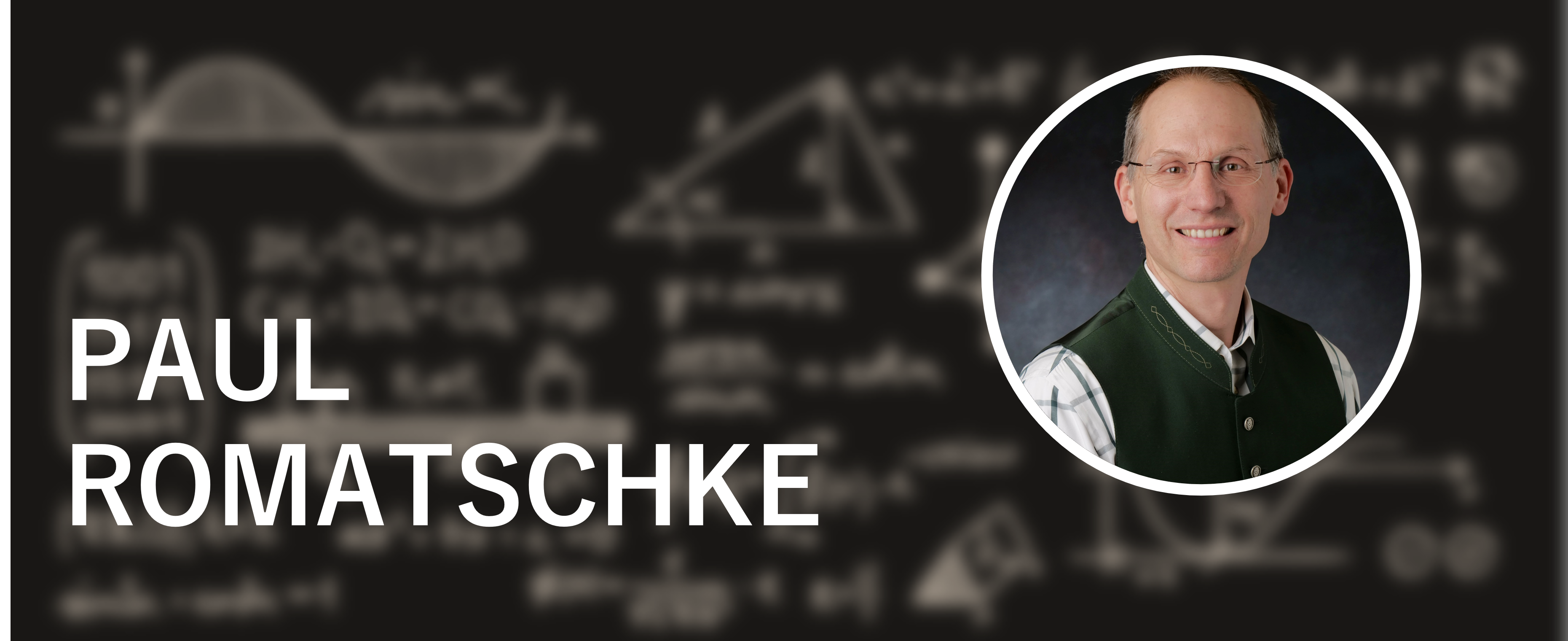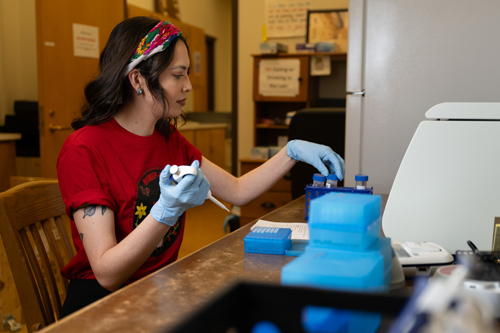WHAT DID THE 2012 EARLY CAREER AWARD ALLOW YOU TO DO?
After doing my fair share of breaking things as a chemistry major undergraduate, I found my calling by focusing on exclusively virtual destruction, as a theoretical physicist. As a theorist, I can smash together all sorts of things without ever having to worry about radiation safety procedures, including colliding black holes in extra dimensions.
Curiously, by using mathematics invented by string theorists late in the last millennium, I used information from black hole collisions to model collisions of atomic nuclei in actual nuclear physics experiments. With the help of my Department of Energy (DOE) Early Career Award, I hired top national and international talent. These students, PhDs, and postdoctoral researchers helped make predictions about what would be seen in these experiments.
And predictions did we make! For instance, we predicted that a collision between a certain isotope of helium with three nucleons and a gold ion would lead to a distinct experimental signature called ‘triangular flow’. Our suggestion was taken up by the experimental community. Using the Relativistic Heavy Ion Collider, the researchers performed a (real!) collision and found agreement with our theoretical prediction.
This, and many other successes, have led to a revolution in scientists’ understanding of matter in the early universe as a fluid, not a gas. It has also supported major developments in the theory of fluid dynamics. My team continues to contribute to this understanding by (virtually) breaking things (which they seem to enjoy quite a bit).
ABOUT:
Paul Romatschke is a professor in the Department of Physics at the University of Colorado Boulder, and a fellow at the Center for Theory of Quantum Matter, also at the University of Colorado Boulder.
SUPPORTING THE DOE SC MISSION:
The Early Career Research Program provides financial support that is foundational to early career investigators, enabling them to define and direct independent research in areas important to DOE missions. The development of outstanding scientists and research leaders is of paramount importance to the Department of Energy Office of Science. By investing in the next generation of researchers, the Office of Science champions lifelong careers in discovery science.
For more information, please go to the Early Career Research Program.
THE 2012 PROJECT ABSTRACT:
Title: Early Time Dynamics in Heavy‐Ion Collisions
Abstract
Currently, there is no dynamic model to describe the evolution of a “Quark‐Gluon Plasma” the system created just after the collision of two heavy ions during experiments at the Relativistic Heavy‐Ion Collider (RHIC) and the Large Hadron Collider (LHC). After the collision, the plasma initially is far from equilibrium. It consists of many particles that interact strongly and therefore cannot be simulated with any known existing technique.
However, for reasons not fully understood, the plasma eventually comes into equilibrium, at which point it can be described using hydrodynamics. The aim of this project is to model the initial, pre‐equilibrium stage following a collision of heavy nuclei together with its coming into equilibrium. To achieve this, a recent development from string theory known as gauge/gravity duality is employed to model the two approaching nuclei as two approaching gravitational shock waves in a space‐time that has a negative cosmological constant (known as Anti‐de‐Sitter). To study the equilibration of the plasma, it will be simulated by solving Einstein’s equations for this problem in general relativity numerically. Once the numerical results are available, it will be possible to extract important information such as when the plasma can be described by hydrodynamics and what its local pressure and fluid velocities are.
This information will help to eliminate many unknowns in current hydrodynamic models of experimental data from the RHIC and the LHC, thus opening the door to extract precision information about material properties (such as the viscosity) of the underlying fundamental theory of strong interactions, Quantum Chromodynamics.
RESOURCES:
P Romatschke and U Romatschke, “Relativistic Fluid Dynamics In and Out of Equilibrium.” Cambridge University Press (2019). [DOI: 10.1017/9781108651998]
R Weller and P Romatschke, “One fluid to rule them all: Viscous hydrodynamic description of event-by-event central p+p, p+Pb and Pb+Pb collisions at TeV.” Physics Letters B 774, 351 (2017). [DOI: 10.1016.j.physletb.2017.09.077]
H Bantilan and P Romatschke, “Simulation of Black Hole Collisions in Asymptotically Anti–de Sitter Spacetimes.” Physical Review Letters 114, 081601 (2015). [DOI: 10.1103/PhysRevLett.114.081601]
DOE Explains… offers straightforward explanations of key words and concepts in fundamental science. It also describes how these concepts apply to the work that the Department of Energy’s Office of Science conducts as it helps the United States excel in research across the scientific spectrum. For more information on atomic nuclei, general relativity, cosmological constant, quark-gluon plasma, and DOE’s research in this area, please go to “Nuclei“>DOE Explains…Atomic Nuclei,” “DOE Explains…Relativity,” “DOE Explains…Cosmological Constant,” and “DOE Explains…Quark-Gluon Plasma.”
Additional profiles of the Early Career Research Program award recipients can be found at the Early Career Program highlights page.
The Office of Science is the single largest supporter of basic research in the physical sciences in the United States and is working to address some of the most pressing challenges of our time. For more information, please visit the Office of Science website.



